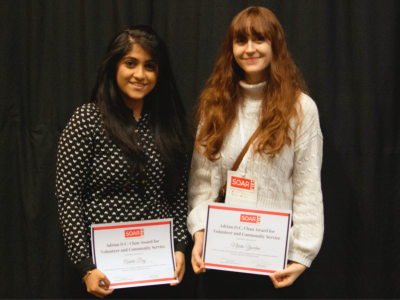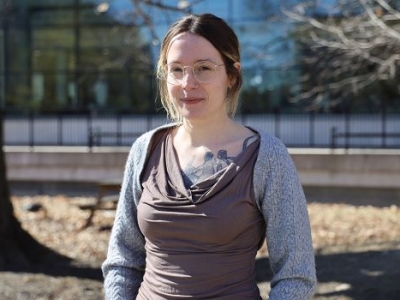Coming from a family of physicians, it seemed only natural that Graham Fraser would be interested in the medical field.
Fraser grew up asking questions like − ‘How do nerve cells in the human brain process information?’
“I wanted to pursue a career that would allow me to combine technology and medicine,” says Fraser. So he decided to apply to Carleton’s Master’s of Applied Science (MASc) program in Biomedical Engineering. The main objective of this degree is to enhance students’ abilities to solve biological and medical problems through the application of engineering principles.
Fraser adds: “This program gives me a perfect opportunity to develop a background in working with biological signals and signal processing. These techniques are applicable to a wide variety of problem areas and are useful in continuing research in biomedical engineering.”
His present research looks at developing software that can be used by medical professionals to analyze data associated with muscle contractions.
Electromyograph signals (sEMG) are a measure of the electrical activities associated with muscle contractions. These signals are used to aid in the diagnosis of neuromuscular disorders, to control powered prosthetic limbs, or used in fatigue studies in exercise science, for instance.
Fraser points out that there can be a large source of error unless personnel in the medical settings are specifically trained in sEMG acquisition, especially since there is no universally used software to acquire and validate sEMG.
“We are hoping that by developing our software for CleanEMG, we can remove much of the uncertainty associated with sEMG acquisition and make it easier and less costly to acquire clean, reliable sEMG signals,” says Fraser. CleanEMG is an ongoing research collaboration between Carleton University and the University of New Brunswick to develop an open-source, user-friendly software tool to quantify noise in sEMG.
Fraser’s supervisors are Adrian Chan and James Green. “Both are very down-to-earth, very approachable and extremely knowledgeable in their areas,” says Fraser. “They are great researchers and both have received awards for teaching with the latest (and perhaps most prestigious) being Adrian’s 3M teaching award.”
Carleton’s MASc degree in Biomedical Engineering is a joint program between Carleton and the University of Ottawa, offered through the Ottawa-Carleton Institute for Biomedical Engineering (OCIBME). This is one of 12 joint institutes between Carleton and the U of O. OCIBME includes relevant engineering and science programs at Carleton.
Fraser says: “Biomedical Engineering at Carleton is great in that it is diverse enough that you have the freedom to select any courses that fit your interests and/or research area. It has a weekly seminar component where you get to listen to speakers talk about their research in biomedical engineering and learn more about just what is going on in the field. This is a perfect way to develop and appreciate the breadth of research that is done.”
He also would like to encourage undergrad students who are interested in the biomedical field to look into the NSERC Undergraduate Student Research Award (USRA) program. “It is an excellent opportunity to work with a professor and gain research experience during the summer. They pay you for your work as well so it really is a good experience. This is what I did the summer before I started grad school and it really helped me get acquainted with the professors that I would be working with and the type of work I would be doing.”
More information about all of our Joint Institutes can be found here.
Wednesday, April 11, 2012 in Grad Student Research, News
Share: Twitter, Facebook




